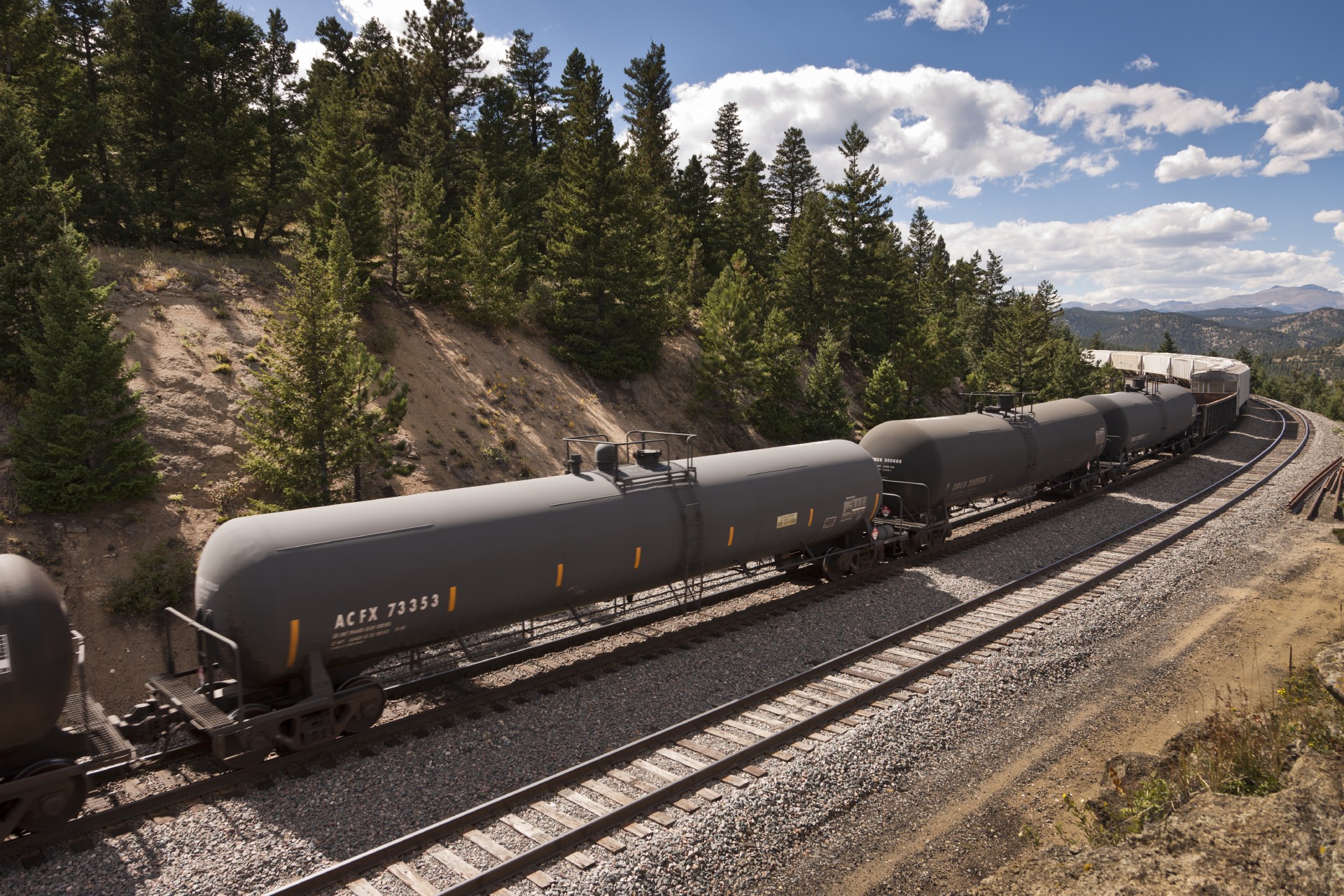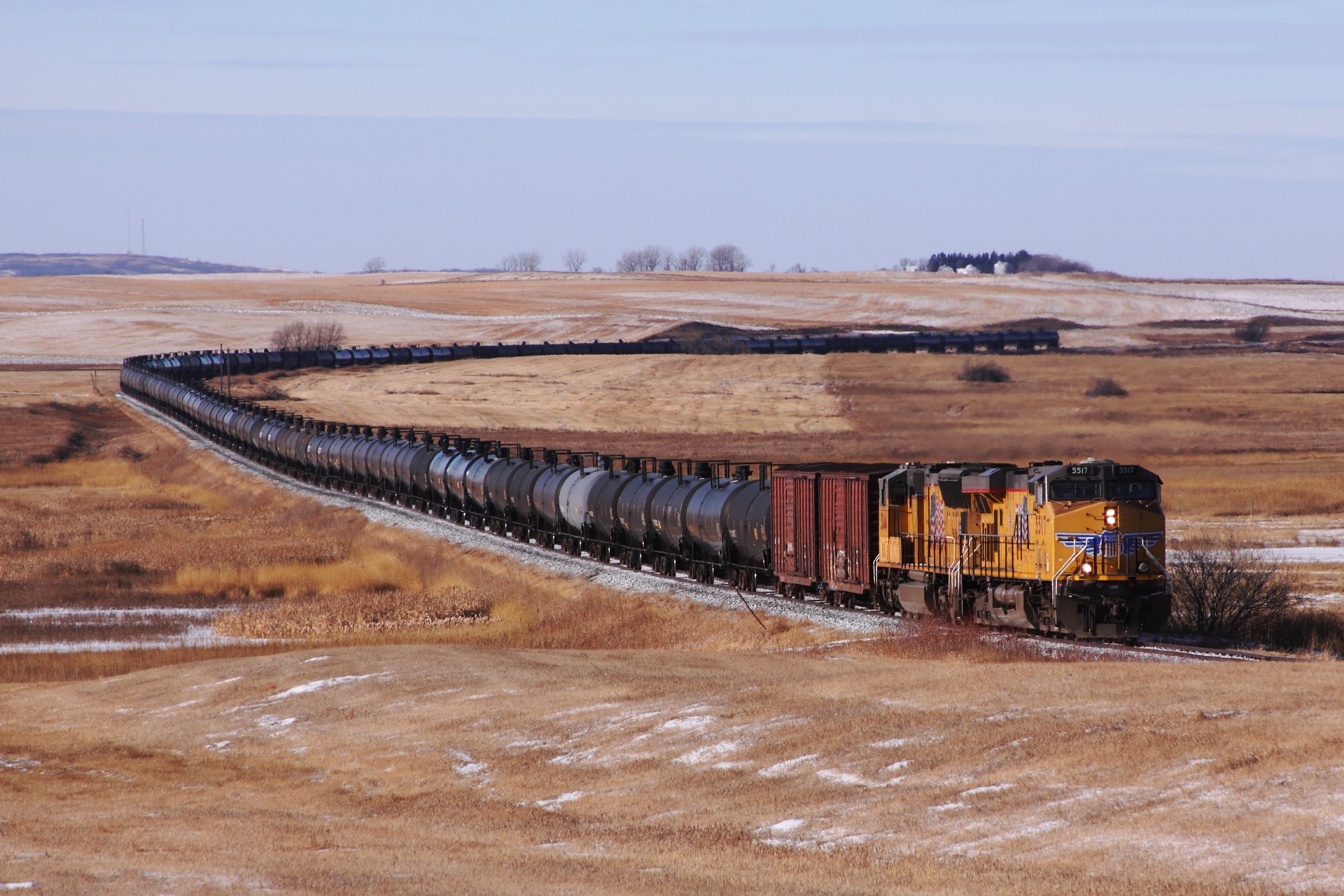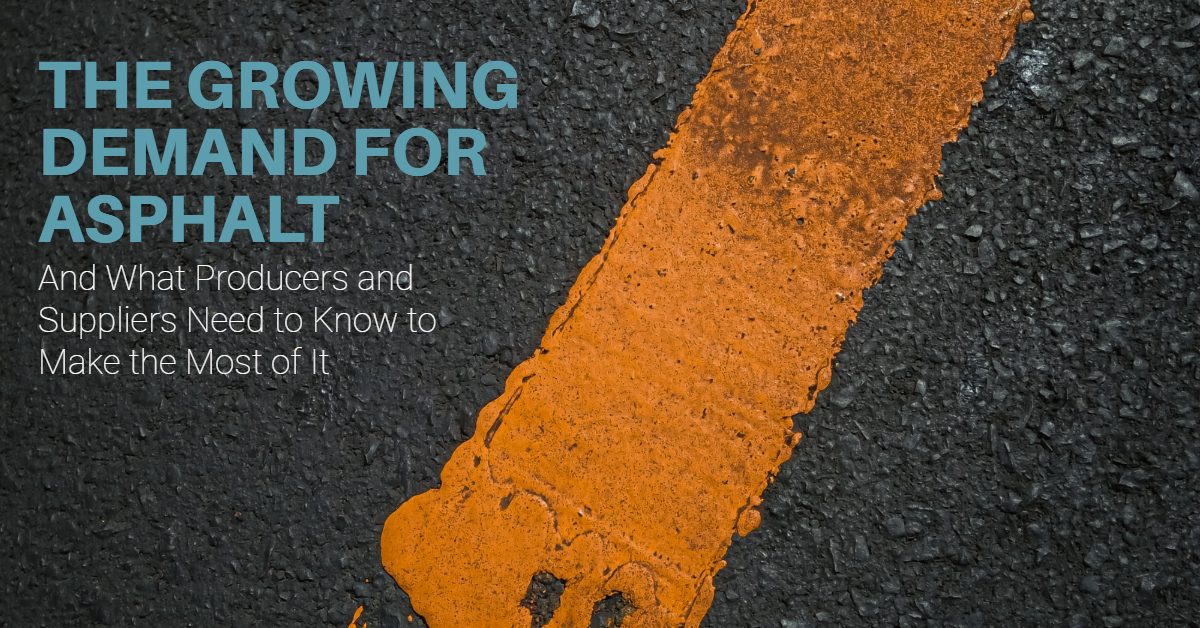What do COVID, President Biden and oil refineries have in common? The answer isn’t a punchline, as one might expect, but it is perhaps unexpected: they’re all driving the demand for asphalt.
Following the long COVID pause, gas consumption is increasing, stimulating budgets for roadway and bridge projects once again. Add to that the ability to produce more asphalt as more petroleum is produced and President Biden’s new infrastructure plan, and it’s the perfect equation for a spike in asphalt orders. But how can refiners and suppliers keep up with the demand and improve their margins, too? Hint: it’s all about supply chain choices.
What Factors Are Driving the Demand for Asphalt?

COVID-19
After the pandemic hit in March 2020, the construction industry was deemed essential, and so road construction and paving projects continued for a while. But gas taxes are what fund the budgets for road construction and maintenance — and between stay-at-home orders, more people working from home and social distancing, people simply weren’t driving much, making financing those projects difficult. So when the new budget year began on July 1, many states cut the budgets and put construction projects on hold.
With more and more people being vaccinated, things are changing. Stay-at-home orders are lifting. More workers are heading into their offices. And people have started dining out, socializing and even attending events again. All of that means more driving, more gas consumption, and more gas tax money feeding budgets that will help states and municipalities catch up on roadway projects.
Refinery Production
The pandemic also affects fuel production. At the same time that construction projects were halting, refineries were only operating at about 75-80% capacity due to the decreased demand for fuel. Asphalt is a “bottom of the barrel” product, which means it’s made by scraping the thickest residue at the bottom of petroleum barrels and distilling it into the final product. So as fewer barrels of petroleum were produced, it put a strain on the asphalt supply.
Now that gas consumption is returning to normal levels following the pandemic slump, refineries are ramping up production of petroleum once again. As more barrels of petroleum are produced, so too will more asphalt — and buyers will be ready to take advantage of the abundance of product.
Aging Infrastructure
Every four years, the American Society of Civil Engineers (ASCE) gives a grade to the country’s infrastructure — and our bridges and roadways aren’t at the top of their class. The ASCE’s “2021 Report Card for America’s Infrastructure” gave roads a D grade. The study found that 43% of public roadways are in poor or mediocre condition — and that means a lot of repairs are in order. The study also found that the number of vehicle miles traveled on roads in “poor” condition has risen from 15% to more than 17% over the last decade, which indicates these already poor roadways will degrade further and the dire need to repair them will only increase.
Bridges don’t fare much better, receiving a C grade. The ASCE reports that 42% of all bridges are at least 50 years old, and 7.5% are structurally deficient, meaning they are in “poor” condition. And yet, drivers continue to traverse them: 178 million trips are taken across these structurally deficient bridges every day. Meanwhile, the average age of America’s bridges has increased to 44 years and the rate of improvements has slowed. How much money will it take to catch up on the backlog of bridge repair needs? A recent estimate puts the total at $125 billion. It’s safe to say that as bridge decks are repaired or replaced, it’s going to take a great deal of asphalt to get the job done.
But it’s not just the demand that will drive the growth of asphalt shipments; funding is also on the horizon. The White House recently announced President Biden’s $2 trillion plan for improving the nation's infrastructure, which is intended to be carried out over the next eight years. While the proposal calls for a wide variety of infrastructure improvements, $115 billion will be allocated to fixing roads and bridges.
Specifically, the plan seeks to modernize 20,000 miles of highways, roads and main streets. The package would also fund repairs to 10,000 smaller bridges across the country as well as 10 of the most economically significant bridges in need of repair.
All of this means that over the next eight years, asphalt producers and suppliers may have more opportunities for growth than ever before.
How Can Asphalt Producers and Suppliers Capitalize on Infrastructure Improvement Opportunities?

Shipping asphalt by rail in tank cars is a cost effective transportation solution.
Find Cost Effective Transportation to Ship to New Markets
As roadway and bridge projects ramp up and opportunities for asphalt producers to sell their product abound, it will be important to nail down the logistics of reaching new markets — as well as reaching existing markets — in the most efficient, cost-effective way.
The catch with new markets popping up all over the country is that, depending on where they’re located, shipping asphalt to them can be cost prohibitive. For instance, relying on a fleet of trucks to ship asphalt farther than about 300 miles could significantly decrease margins — or could be so costly, it makes the opportunity unviable altogether.
In these situations, rail offers an economical solution. Shipping by rail typically costs less than shipping by truck, especially over long distances. So as new markets arise, shipping by rail can help you reach them more affordably – and turn a better profit while you’re at it.
Increase Margins by Simplifying the Supply Chain
The increased demand for asphalt also presents the logistical challenge of shipping in large quantities. Fortunately, asphalt producers and suppliers have options there, too. Large quantities of asphalt can easily be shipped by train, with a single rail car carrying about the same amount of product as three trucks. In fact, just one train can ship the same amount of asphalt as roughly 300 trucks, which both accommodates large orders and greatly simplifies logistics. Fewer trucks means less to manage — and that translates to reduced labor costs.
If you’re seeking to serve existing markets in a simpler, more economical way, rail can be a game changer for your supply chain.
Choose an Environmentally Responsible Transportation Mode
In addition to accommodating large volumes and being a more affordable shipping option, railroads offer the most environmentally responsible way to ship freight by land. On average, railroads are three to four times more fuel efficient than trucks, typically moving one ton of freight 480 miles on a single gallon of diesel fuel. That means trains generate a carbon footprint that’s up to 75% less than trucks.
As companies (and their customers, employees and investors) place more of a focus on Environmental, Social and Governance (ESG) policies, shipping by rail is an easy win in the “Environmental” category.
How Do You Ship Asphalt by Rail If You Don’t Have Tracks?

Asphalt producers who want to take advantage of the volume and cost advantages of rail but don’t have tracks at their facilities (or destinations) can still use trains to ship their product. Thanks to transloading, asphalt can be heated, then transferred between trucks and tank cars. Transloading gives you access to an expansive rail network without the capital investment in tracks, and logistics companies like Loup Logistics can connect asphalt refiners and producers to transload facilities across North America.
The Asphalt Boom Is Coming — Are You Ready?
Roadway and bridge projects are about to spawn a run on asphalt. If you’re ready to learn more about economical asphalt shipping that lowers your costs and improves your margins, get in touch and we’ll connect you with an expert who can help.
Related Articles
- Quiz: Is Rail the Right Fit for Your Shipments?
- Rail 101 FAQs
- Transportation Modes Revealed: A Comprehensive Look
- America’s “Water Highway” Is Aging — Are You Prepared for the Closures Ahead?
- The Rail Industry Is Saving Millions of Gallons of Fuel a Year – And They’re Using “Cruise Control” to Do It
- Rail: An Environmentally Responsible Way to Ship









